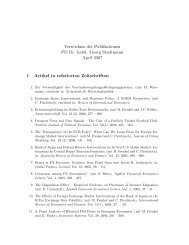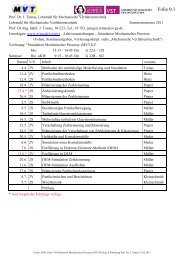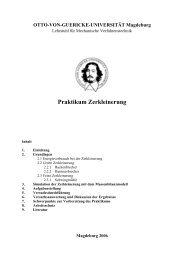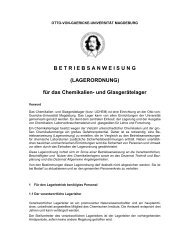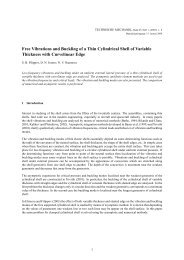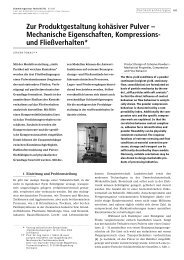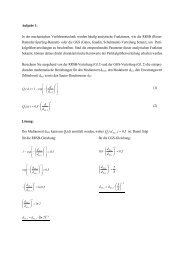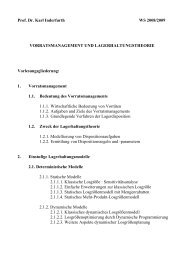Mechanics of nanoparticle adhesion â A continuum approach
Mechanics of nanoparticle adhesion â A continuum approach
Mechanics of nanoparticle adhesion â A continuum approach
You also want an ePaper? Increase the reach of your titles
YUMPU automatically turns print PDFs into web optimized ePapers that Google loves.
<strong>Mechanics</strong> <strong>of</strong> <strong>nanoparticle</strong> <strong>adhesion</strong> — A <strong>continuum</strong> <strong>approach</strong> 33κvisκp+ κp,t=κ −κ −κA,t p p,t(74)F=0 r 1,2Eqs. (72) and (73) consider also the flattening response <strong>of</strong> s<strong>of</strong>t particle contactsat normal force F N = 0 caused by the <strong>adhesion</strong> force κ⋅F H0 (Krupp [56]) andκ vis ⋅F H0 . Hence, the <strong>adhesion</strong> force F H0 represents the sphere–sphere contact withoutany contact deformation at minimum particle–surface separation a F=0 . Thisinitial <strong>adhesion</strong> force F H0 may also include a characteristic nanometer-sizedheight or radius <strong>of</strong> a rigid spherical asperity a < h > a F=0 ), the contribution <strong>of</strong> the plate,second term in Eq. (76), can be neglected and the <strong>adhesion</strong> force may be describedas the sphere-sphere contact [98].Rabinovich and co-workers [113–115] have used the root mean square (RMS)roughness from AFM measurements and the average peak-to-peak distance betweenthese asperities λ r to calculate the interaction between a smooth sphere anda surface with nanoscale roughness pr<strong>of</strong>ile (index Ra):



